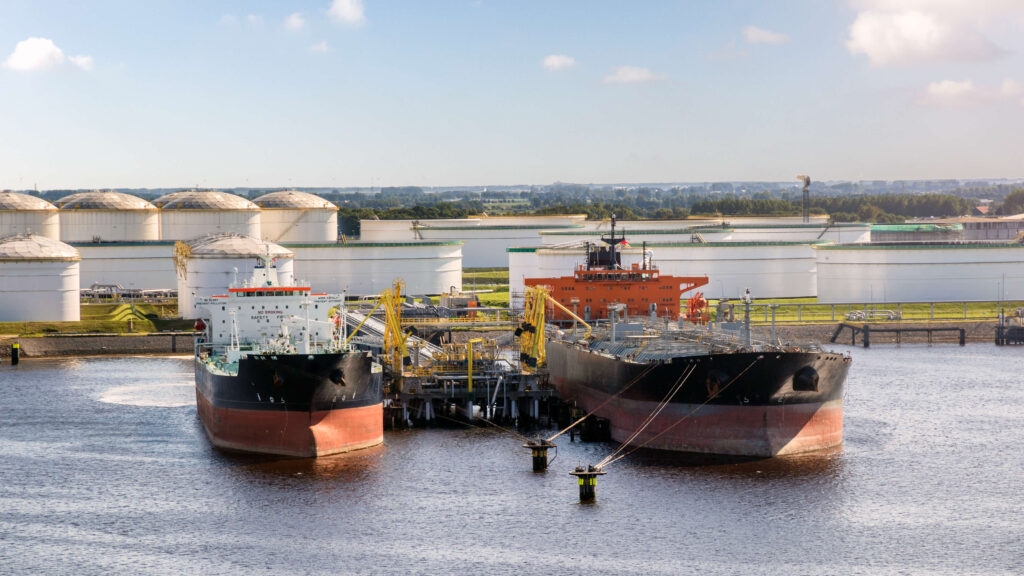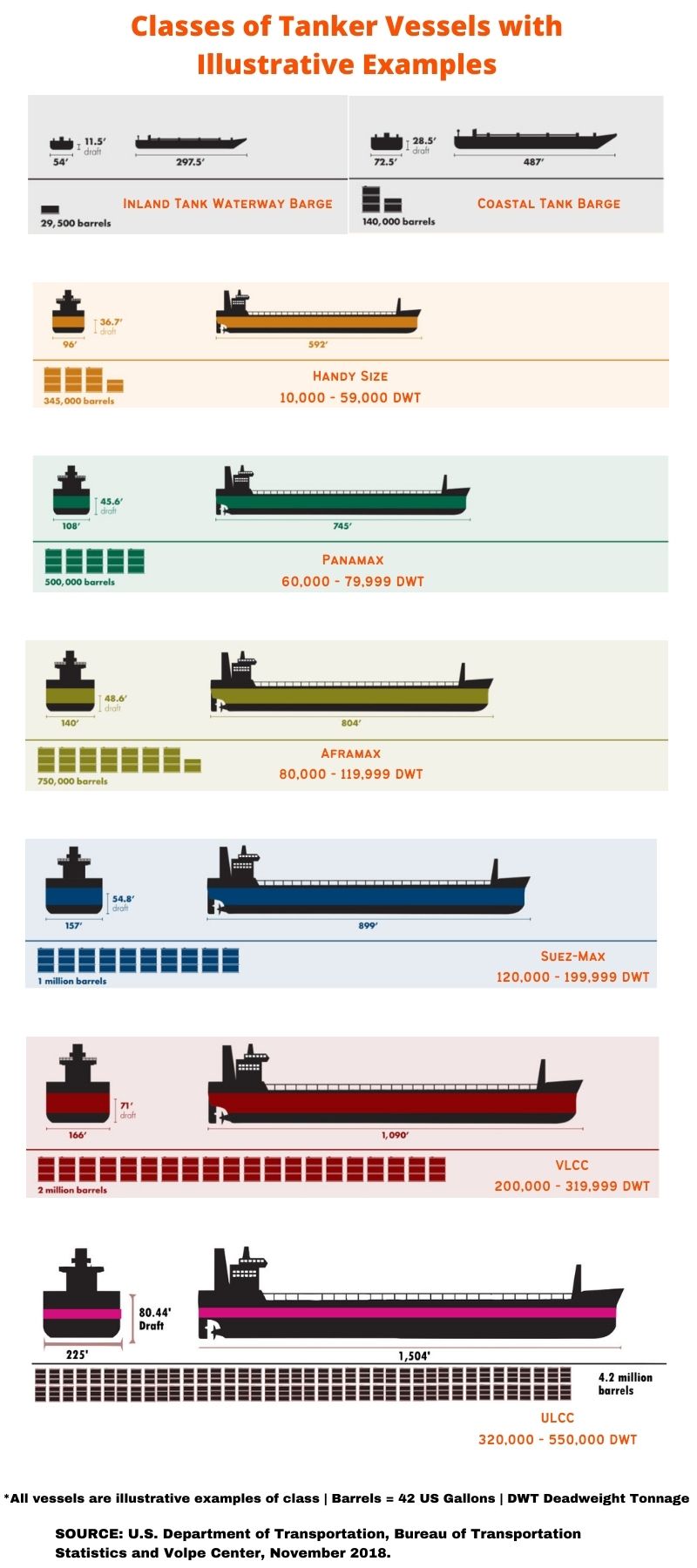An oceangoing ship designed to haul liquid bulk cargo in world trade. Although the term mostly refers to ships, it can also be used for airplanes and tanker trucks intended for bulk delivery of chemical liquids and gases, particularly in the petrochemical industry.
Imported Crude Oil arrives by tankers.

What are the different sizes of oil tankers?
Crude oil and refined petroleum products are transported by ships ranging in scale from engineless river barges to enormous oceangoing cargo ships big enough to carry more than 100 million gallons of crude oil. The infographic below depicts the main class sizes used to classify tanker vessels, along with an example of each class. The deadweight tonnage (DWT) of a vessel is an indicator of its carrying capacity that is used to distinguish oceangoing ships. Since each class’s capacity and physical scale differ, the illustrative vessels’ infographic measurements should be treated as representative rather than conclusive. The largest oil tankers are classified as very large crude carriers (VLCC) and ultra-large crude carriers (ULCC).

Classes of Tanker Vessels (Click to view full-size image)
What is the biggest oil tanker ever built?
Classified as an ultra large crude carrier (ULCC) supertanker, the Seawise Giant is considered the biggest and longest ship in history. Produced by the Sumitomo Heavy Industries in Japan, the ship became operational in 1979. Later renamed as the Happy Giant, Jahre Viking, Knock Nevis, Oppama, and Mont, until was sunk in the Gulf War in 1988 and finally dismantled in India in 2009. At present, the only remnant of the Seawise Giant is its 36-tonne anchor housed in the Hong Kong Maritime Museum.
Tankers on the Road
Tanker trucks are the carriers that transport massive quantities of liquids in large tanks on land. They come in a variety of sizes and are tailored for various cargos and operation specifications. For loading and unloading bulk liquids, tanker trucks are fitted with a pumping system. The 80,000-pound gross weight limit for trucks in the United States typically restricts the capacity. The maximum capacity of small tanker trucks is 3,000 gallons, while large tanker trucks have a maximum capacity of 11,600 gallons. The overall capacity of a tanker vehicle, on the other hand, is determined by the density of the liquid being shipped.























